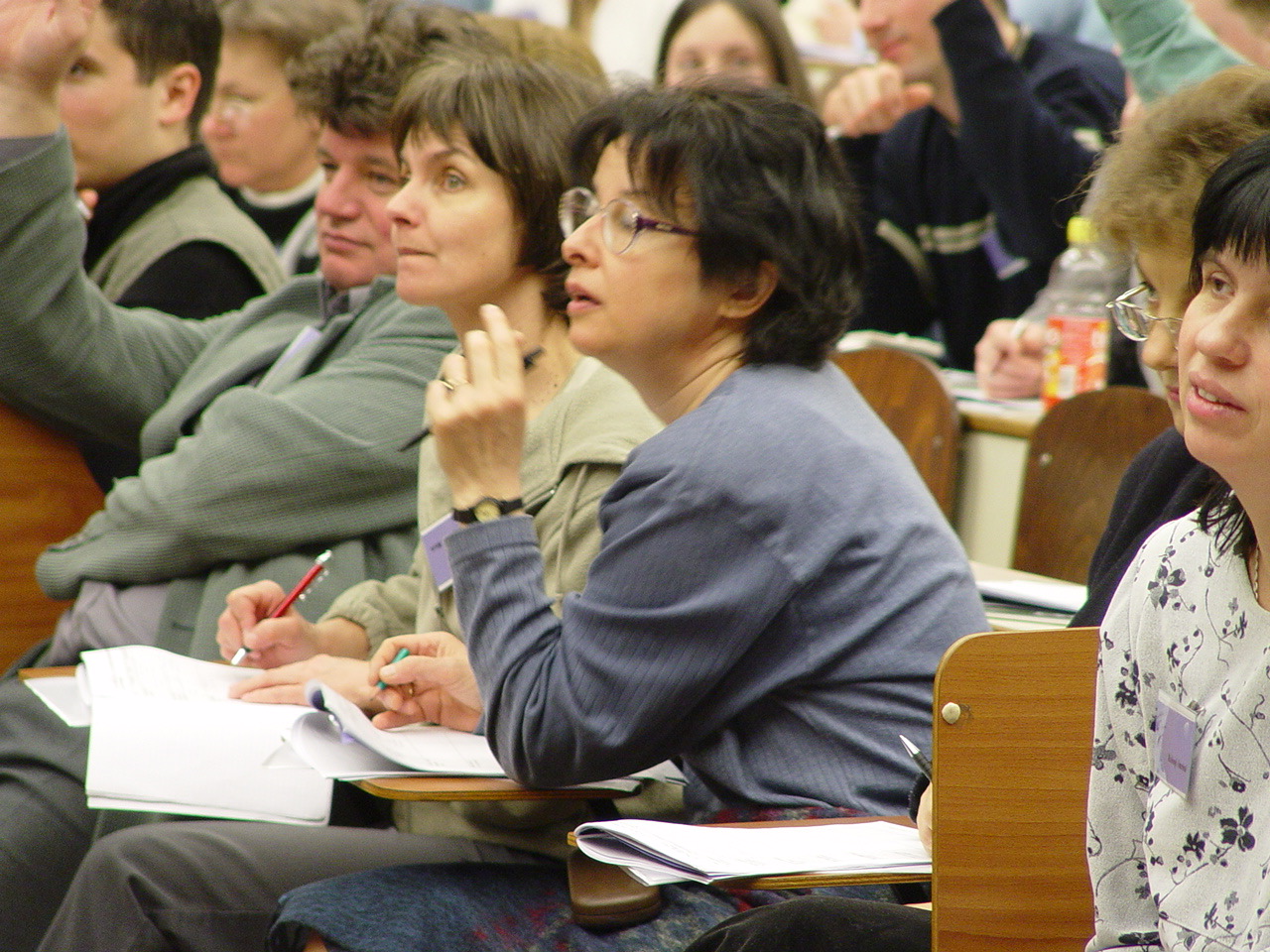we partner for Kingdom impact as we pursue our vision
"you are never more like god than when you are living in community and working in partnership."*
Cru Church Movement is a partnering movement for the following reasons:
- For God’s glory (1 Corinthians 10:31; Habakkuk 2:14)
- Partnering is the call of God to work together as the body of Christ (Acts 2:42-47; John 17:20-23; Philippians 1:3-6, 27; Ephesians 4:1, 1 Corinthians 12:12) — we’re fulfilling a mission, not building an organization
- Partnership promotes humility, generosity, and broadens our scope of influence (Philippians 2:3-4)
- The world is watching — our unity contributes to them seeing and knowing Jesus (John 17:20-23)
- To bring a smile to the face of Jesus by demonstrating the unity He prayed for in John 17
* Ray Bakke, Regent’s Chair and Acting Academic Dean, Bakke Graduate University, Seattle, WA
PARTNERING POSTURE
We hold the following values as essential for effective partnership:
1. Trusting relationships
2. Unselfish humility—each partner has something to give and something to learn
3. Common vision and compelling goals
4. Complementary contribution
5. Commitment to action
PARTNERSHIP PROCESS
DISCOVERY
1. Foundational Beginnings:
- Understand the heart motivation and calling of the other
- Listen for burdens that make them weep, pray and pound the table and what future they envision
- Is there theological, ministry philosophy and personal unity?
2. Common Concerns (VISION & DIRECTION EMERGES)
DECISION
3. Complementary Contribution/Roles (RESOURCES/IDEAS/PRACTICES)
4. Common Goals (STRATEGIC PLAN)
ESTABLISH
5. Confirmation (GOD ANNOINTS – trust is built, God is experienced)
6. Commitment to action (TACTICS, RESOURCE ALLOCATION, TEAM, ORGANIZATION, MOU)
essentials of high level collaboration
God is doing a unique work in our day. Kingdom leaders are gathering tohear the voice of need in our cities, to allow God to burden them and to build trust and dream together. They unite so as to take collaborative action – all to advance the mission of Jesus Christ as we meet the cities deepest needs and show that Jesus and His gospel are better than anyone can possibly imagine!
A conviction guides those moving toward strategic collaboration: “The Church’s resources for impact are lost due to lack of broader networking, better communication and lack of an effective plan. We must come together to do something great in the power of the Holy Spirit – to advance the Kingdom and bless the city – something we could not do apart from each other.” Leaders become convinced that they need to synergize to wield their collective influence. Men and women find their cause and live out God’s purpose in unity with others. In networks they pray, dream and make plans, asking:“What is God’s vision for our city? Where is His love unknown? Where has His Gospel not gone? What does He want us to do together to bless the city? How can we unite to remove the shadow of evil’s darkness?”
Conveners are committed to connect, collaborate with and catalyze Kingdom citizens, leaders and resources to plant multiplying churches, and create Gospel impact initiatives in each domain of the city. Therefore, we will support, join and help develop multiplying churches, pastors, church-planters and conveners who bring Kingdom leaders in a city together. Our hope is to accelerate strategic collaboration to make Jesus known, multiply the church and serve the well-being of the city. We’ll join with others to call Kingdom citizens to Jesus, to each other and to the city, so that every man, woman and child may know His Gospel, experience His love and enter a discipleship relationship that encourages them to follow Christ wholeheartedly.
kinds of partnership
Through different collaborations (E.G. – Finishing the Task, Mission America, Church Planters Leadership Fellowship, Table 71, Vision 5:9, CoMission, Youth at the Threshold of Life/Crossroads, City Gospel Movement Team, Project AERO, Jesus Film Partners, the Worldwide Student Network, Evangelicals and Catholics Together, etc.), we have recognized there are varying kinds – or levels – of partnerships. All are needed and respectable. Understanding and affirming the levels of partnership greatly aid unity within the Body of Christ and help us channel our strategic limits well.
LEVEL 1: BLESSING
- Speaking well of and verbally supporting the other entity, while agreeing that we are better apart than together.
- The most overlooked ingredient to maintaining unity in the Body of Christ is at this level. We should always bless what Jesus (the Head of the Body) sovereignly leads! We can do this by speaking well of, praying for and pointing others to these other entities – other churches, other agencies, other divisions within the same agency.
LEVEL 2: CONVERSATION & PRAYER
- Getting together with other entities and leaders to know and pray for each other. The desire and goal is to build friendships, while learning more about and from each other.
- EXAMPLES: prayer alliances, pastors groups, periodic meetings/seminars sponsored by other entities, etc.
LEVEL 3: COOPERATION / RESOURCING
- When the potential of our combined efforts serve to accelerate a shared vision, groups come together and share some resources with each other for an agreed upon goal.
- Each organization, church, division or agency maintains their own identity.
- EXAMPLES: Pray together, understand each other’s priorities and ethos, share strategies/resources, and pursue some efforts together.
LEVEL 4: HIGH LEVEL COLLABORATION
- When aligned friends/groups combine their efforts, and in some cases, their identity, in order to fulfill a new mission – a shared mission – because they recognize that they are better together. The mission is developed among friends as they see something new is needed. All agree that no one partner could do this without the other(s), and so the combination of their efforts serve a new mission.
- The groups come together to plan, organize and work together, and heartily share resources with each other for agreed upon goals. Partners bring the best of what they have to offer into the collaboration and create a new missional entity (whether a formal 501c3 or not), with a new leadership model. The need for neutrality in leadership demands a new structure at this level as well.
- Practices of High-Level Collaborators include:
- Shared leadership
- Shared strategic planning
- Agenda and decision making are made together
- Lots of communication
- Prayer and the Word creating a humble, learning environment
- Bringing your best forward and leaving your ego behind
- EXAMPLES: Mission America, The Co-Mission, Table 71, FTT, GACX, Elevate KC, Vision 5:9
Ingredients for High Level Collaboration – Level 4
- Relationship first.
- Everyone has needs, something to give and something to learn.
- Full disclosure – tolerating each other will sow seeds of distance and disunity.
- Honor all at all times publically and privately.
- The mission is important – it’s what brings us together.
- Rich diversity with one voice and one Plan – creating & determining the way forward together.
IDENTIFY
Discover churches, entities, networks, denominations who want to partner
ASSESS
Assessment the church-planting lead and launch team
RESIDENCY & COACHING
(6-24 months) Training with relevant, practical, comprehensive plans and tools for evangelism, disciple-making, and community engagement
RESOURCES
Tools, Administrative help, Funding, etc.
LAUNCH TEAM DEVELOPED
NOTE: Profile and Size of Team is Immeasurably Important
Network of fellow-planters to call “Home”
PARTNERING FOR CITY ENGAGEMENT
Promote City Gospel Movement initiatives — inspiring and mobilizing city movements toward church-planting, evangelism and multiplying discipleship, as they pursue love-in-action initiatives
youth at the threshold of life
PARTNERING TO SERVE THE EDUCATION DOMAINServing educators by helping them to advance our Youth at the Threshold of Life curriculum — a value- and character-development curriculum, which includes emotional development, decision-making and relationship-building training.
MISSION

Youth at the Threshold of Life (YTL) is an equips, empowers and unleashes our future generation. YTL helps youth become mature adults— relationally, emotionally, socially and spiritually.
YTL began in Hungary in 1994 and now is used worldwide. What is listed below is what it can become in the United States. Some schools are already making plans with us in American cities!
YTL is a social-science curriculum
YTL is a social-science curriculum aimed at youth – ages 13-18. It focuses on character and friendship development, as well as drug and sexually transmitted disease prevention. It began in Hungary in 1994 and is now in hundreds of Hungarian public schools nationwide. From Hungary it has grown and been adapted for use in over 60 countries.
YTL is an accredited educational program
YTL is an accredited educational program of CRU Hungary (a faith-based non-profit), and has been sponsored by the Ministry of Education (Hungarian Parliament), the National AIDS Coordinator of Hungary and Hungary’s National Institute for Health Promotion (NEVI). Our curriculum is accredited by the Ministry of Education, YTL grants 30 post-graduate credits toward the educators’ ongoing education requirements.
YTL is a nationwide teacher’s training
YTL is a nationwide teacher’s training and support network committed to enhancing the professional and personal development of all educators working with youth – including public school, military, religious, clinical and medical educators.
YTL is a multi-faceted program
YTL is a multi-faceted program that contributes to the lives of middle, high school and college students, educators and other professionals working directly with students. We seek to care for and resource them in such a way as to help them grow personally and professionally – helping them to balance all dimensions of life while emphasizing the importance of their spiritual area.
YTL is an international program.
YTL is an international program. YTL has partnership with Youth at the Crossroads, which began in the fall of 1995 with the help of YTL staff and the National Institute of Public Health in Hungary. As of 2018, YTL is in over 60 countries.
GOALS

1. TRUE IDENTITY: “I’m valuable!”
Increase students’ self-esteem by strengthening their sense of dignity, by helping them base their self-image on solid foundations, by teaching them skills to intelligently control their emotions, and by developing their character.
2. INTIMATE RELATIONSHIPS. “I’m important!”
Develop students communication and relationship skills.
3. MOTIVATING GOALS. “I’m able!”
Empower students to pursue their future by helping them to discover their significance, abilities and roles they can play in life and in society. Also speak frankly about the dangers and traps that await them on their journey.
CURRICULUM

VOLUME 1: TRUE IDENTITY
(18 Lesson Plans, 3 Reading Assignments.)
- Me and My Self
- Me and My Emotions
- Me and My Character
VOLUME 2: INTIMATE RELATIONSHIPS
(16 Lesson Plans, 6 Reading Assignments.)
- The Power of Relationships
- The Beauty of Relationships
- The Pain of Relationships
VOLUME 3: MOTIVATING GOALS
(16 Lesson Plans, 4 Reading Assignments.)
- Setting and Reaching Goals
- Avoiding Traps
- Withstanding Pressure
READINGS WE RECOMMEND
- J.I. PACKER: EVANGELISM AND THE SOVEREIGNTY OF GOD
- DOUG POLLOCK: GOD SPACE: WHERE SPIRITUAL CONVERSATIONS HAPPEN NATURALLY
- JOHN PIPER: JESUS: THE ONLY WAY TO GOD
- RANDY NEWMAN: QUESTIONING EVANGELISM